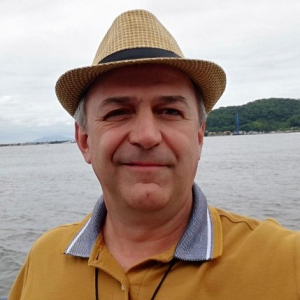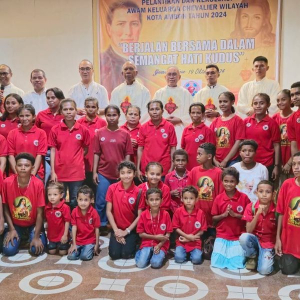Peter MALONE
Goebbels and the Fuhrer
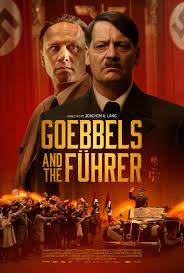
GOEBBELS AND THE FUHRER
Germany, 2024, 121 minutes, Colour.
Robert Stadlober, Fritz Karl, Franziska Weisz.
Directed by Joachim Lang.
While films about the Third Reich have focused on Hitler, especially Downfall, in which Joseph Goebbels played a central role, there have not been many films which have focused on Goebbels himself as a central character. This is very much the case here.
An initial statement indicates that the screenplay is based on the verbatim texts by Goebbels and others, that each line is authentic. And, throughout the film, there are insertions, especially of Goebbels and Hitler, from actual film footage (indicating that the actors here resemble Goebbels and Hitler significantly, Robert Stadlober, diminutive, limping, smiling and sneering as Goebbels, Fritz Karl, however, rather lower key as Hitler).
And the question to be asked: what is a 21st-century audience to make of Goebbels, as a person, his role in the Third Reich, the propagandist, mastermind of policies, his loyalty to Hitler? There are many indications throughout this film.
There is also the issue of him as a person, his personality, his ambitions, his snobbery, smug, but also his relationship with women, his affairs, especially with the Czech actress, Lida Baarova. Then there is his marriage to his wife Magda, his infidelities, her reactions, and the number of their children. In this regard, Magda’s special friendship with Hitler is significant but also the fact that Hitler was aware of Goebbels’ liaisons, did not want them to undermine aspects of government, intervened that Goebbels and Magda would make impact to stay together.
There are also some glimpses of the other leaders of the Third Reich, reminding audiences of who they were, what they did, and indications of Goebbels assessment of them.
The main focus of Goebbels’ activity is on his propaganda, the formulation of policies, pragmatic rather than principled, press, radio, cinema, his adapting them but always especially loyal to Hitler himself.
The 20th century audience might wonder how Hitler could have achieved such power, such influence on the German nation and how men like Goebbels could rise to such status of influence in German history and in world history.
- Audience knowledge of the Third Reich, the rise of National Socialism in the 1930s, knowledge of Goebbels, Hitler?
- The film based on documents, verbatim words, visuals of the period, footage of Goebbels and Hitler, intercut with the performances for the film?
- The film offering the outline of Goebbels’s life, when young, intelligent, his studies, writing, the attraction to National Socialism, the loyalty to Hitler, continued support, his involvement in propaganda, policies, the use of the media, the press, his interest in films, Leni Riefenstahl and her film of the Berlin Olympics, his attitude towards the Nazi leadership, his personal life, relationship with women, marrying Magda, the number of children, his relationship with the actress, public, Hitler intervening with Goebbels and with Magda, arranging the pact between them? His continued ambitions, the ending of the Third Reich, his achievement, with Magda and the children, suicide?
- The structure of the film, the focus on Goebbels, moving back and forth in time? Particular events and perspectives throwing light on his char press, radio, film, and its development and changes?
- The performance of Goebbels, impersonation, his personality, ambitious, snob, smug, his manner with the actress, with Magda? The scenes with the children?
- Magda, age, previous marriage, the children, the relationship with Goebbels, the humiliation of his liaisons, her friendship with Hitler, the issue of divorce, Hitler and the pact her own relationships, the death and the children?
- Goebbels in action, his creativity, his writing, his policies, issues of propaganda, shrewd, opportunist? In favour, moments out of, his adapting to Hitler?
- The port of Hitler, more realistic than some portraits, showing the less fanatical side in day by day events, his exercise of power, diplomacy and not, his quiet ruthlessness, the public appearances, the insertion of actual scenes? His militancy against the Jews, not admitting defeat, the relationship with Eva Braun, our given to Goebbels, the decision for death?
- The glimpses of the other Nazi leaders, Goering, Himmler, Boorman, Speers and the others, their roles, their manner, the characters?
- Goebbels, a final success, but too late, the Russians, the final days in Berlin, the decision for death?
- The impact of this kind of history for 21st-century audiences?
Sabbath Queen
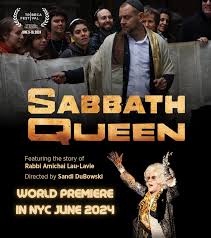
SABBATH QUEEN
US, 2024, 105 minutes, Colour.
Amichai Lau Lavie
Directed by Sandi Simcha Dubowski.
This is an unexpected documentary, filming for almost 30 years as well as incorporating footage from further back.
This is a film especially for Jewish audiences, to be condemned by Orthodox audiences, a challenge for Conservative/Liberal audiences, and acclaimed by Jewish audiences who are open to change in the 21st-century.
The film is a challenge for a non-Jewish audience, in the sense of trying to appreciate the different perspectives, to appreciate a lot of the nuances of the Jewish and the biblical traditions, the roles of the rabbis, the influence on various community is – a non-Jewish audience may feel that they are observers to the action of this story.
At the centre is a significant character, Amichai Lau Lavie. His ancestry is Polish, grandfather a rabbi who did not desert his community but was sent to a concentration camp with his two sons, one helping the other to escape and surviving. They migrated to Israel, one son becoming the chief Rabbi in Israel, statesman and ambassador (seen with a number of significant world celebrities including the Dalai Lama and Pope John Paul II). He married an English woman and they had two sons, one becoming a rabbi, then, the other, Amichai whose story this is.
While the film gives the historical background of the family, the material, filmed over the decades by the director, Sandi Simcha Dubowski, the action of the film moves around various times, later scenes illuminating what happened in the past, past scenes indicating the direction of Amichai’s life.
He identified as gay, something very difficult for his family. At age 28, he went to the United States, found a place in the gay community, took on a persona to dramatise issues, a drag Queen act, a Hungarian widow who is quite outspoken, appears at parades, at meetings, even walking into the Dea are d Sea as a gesture to free the feminine spirit under the sea.
Throughout the film there are excerpts from a long interview with Rabbi Ben, commenting on his brother’s relationship with Judaism, with orthodoxy, with the role of rabbis, his openness to other religions, his gender issues…
But, there are a lot of sequences with Amachai himself, interviews at various stages, the late 90s, 2010 and several during the succeeding decade. He is very frank in his explanations of himself, his Hungarian widow role, relationship, children through surrogacy and family life, his relationship with his brother and parents.
But, with his knowledge of the Bible, he enrols for Biblical studies with the intention of becoming a rabbi, which is also something of a contradiction for his family when he is ordained as rabbi. But, with his open outlook, he starts up a special schul, which everyone can attend, raising the issue of presiding at marriages, a case in point two gay Buddhists in New York, a Jewish woman and a Hindu man, with constant comment about biblical tradition, Jewish tradition, 21st-century, need for change and openness.
There are also some sequences of protest against him, highlighting some vicious Orthodox men and their attitude towards women (with scenes of synagogue worship, the separation between men and women), and their vicious anti-Arab protests and denunciations.
The film was being finished after the Hamas attack on Israel, October 7, 2023. Amachai returns to Israel, joins demonstrations, denouncing the bombing of Gaza, with placards urging a stand for Israel but mourning for Palestine.
Which means that this story will be an ongoing continued challenge for Jewish audiences, non-Jewish audiences observing, trying to appreciate and understand.,
Four Souls of Coyote

FOUR SOULS OF COYOTE
Hungary, 2023, 103 minutes, Colour.
Voices of: Lorne Cardinal, Diontae Black, Bill Farmer.
Directed by Aron Gauder.
Four Souls of Coyote is quite an unexpected cinema experience. It is an animation film. It is from a Hungarian director, a particularly European sensibility. However, it is a film about North America and its mythologies and histories, the Native Americans, the inroads by the newcomers to the continent.
The animation visual style is quite striking, range of characters, different landscapes, the present, the past, the landscapes of mythologies.
The film opens in the present, big business and exploitation, the destruction of the environment, business arrogance and the need to be challenged.
In the meantime, amongst the local Native Americans, the grandfather tells his granddaughter the story of the origins, the visualising of various mythologies, the different animals, parallels with Genesis narratives, issues of good and evil, especially embodied by the creature, the coyote, and its four manifestations.
The voices used are those of Native American actors.
There are quite some vivid sequences of the British, the invasion, the taking over of the land and the various political and cultural issues.
After this exploration of the mythologies, the action returns to the present, the need for some kind of protest, confrontation with the exploitation of big business – and, hopes for harmony and reconciliation, working together for the future.
- The impact of the film? The animation style? The Hungarian director and European sensibility? The Native American myths, Native American history, the British invasion, religion and culture, 21st-century and exploitation of the land?
- The animation style, the characters, colour, movement, layout? Realistic aspects? Surreal and imaginative aspects? The total effect? The musical score?
- The framework, the exploitation of the land, the business executive, relentless, phone calls, the companies? The vehicles, the drivers, the defiance? The protesters, the placards, motivations? The film as a protest?
- The grandfather, the granddaughter, the fire, his telling the story? The Native American heritage?
- The visualisation of the story? Origin story? The creator and his appearance, the appearance of the dark, their conversations? The various stages of development, evolution, the formation of the land, in its bird form, the materials, the gradual progress, the familiarity with creation and origin mythologies?
- The coyote, the four souls, emblem of evil, confrontation? The stealing of the material, the formation of the band, of the woman? The Satan aspects? The development of the man and the woman? Against the coyote, independence, descendants?
- The impact of this visualising of the mythologies, embassies, comparisons with Genesis narratives? Good, evil, the development of the world, progress, animals, crops, humans? The significance of the creation of the buffalo, its status, the coyotes and attack?
- The invasion, the picture of the British, the visuals, the costumes, the ships, courtrooms? The presumptions of colonisation? Of religion and culture? The interaction with the Native Americans, the consequences?
- The hopes for peace, interactions, the realities of history, the contrasts?
- The return to the initial situation, the attack of the vehicles, the revolt of the drivers, the protesters, the possibility for some kind of settling differences, hope for the future?
Moacir Goulart de Figuredo MSC – Provincial to Bishop
Moacir Goulart de Figuredo MSC – Provincial to Bishop
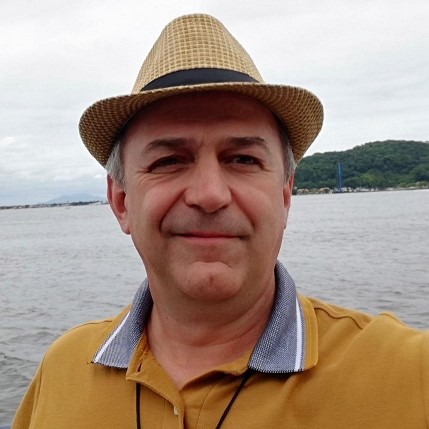
P. Moacir is currently the Provincial of the MSC Province of Curitiba, which includes the MSC Section of Ecuador. It is a large missionary Vicariate in the Amazon region of Ecuador.
Thanks to Moacir for accepting this challenge to be a new MSC servant-bishop. We know that Moacir will continue his dedication to the mission.
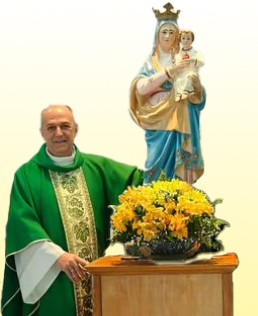
Further information: Father Moacir was born in the city of Salto do Lontra (PR) on September 30, 1965. He took his perpetual vows in the congregation of the Missionaries of the Sacred Heart on February 2, 1990, and was ordained a priest on November 16, 1991. Of his 33 years of priesthood, 20 were spent in Ecuador, as parish priest, vicar, seminary rector, archdiocesan director of the Pontifical Mission Societies and executive secretary of the National Missionary Center of the Ecuadorian Episcopal Conference. In Brazil, Father Moacir was provincial superior, seminary rector and vicar.
Since 2022, Father Moacir has lived in Curitiba, where he serves as provincial superior of the congregation of the Missionaries of the Sacred Heart (Province of Curitiba).
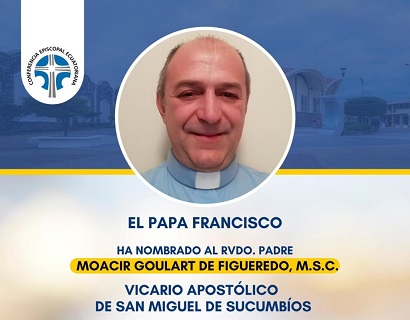
Tess Ward OLSH, farewell from Wadeye
Tess Ward OLSH, farewell from Wadeye
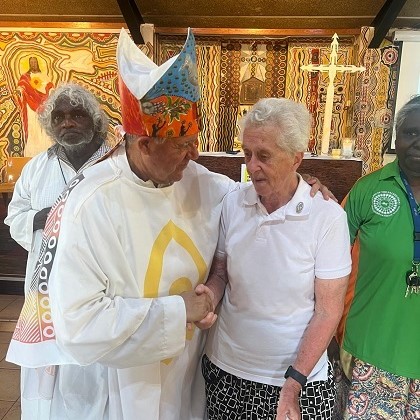
Tess has spent many years at Wadeye, has worked in Timor Leste and has served as Provincial of the Australian Province.
From the Diocese of Darwin
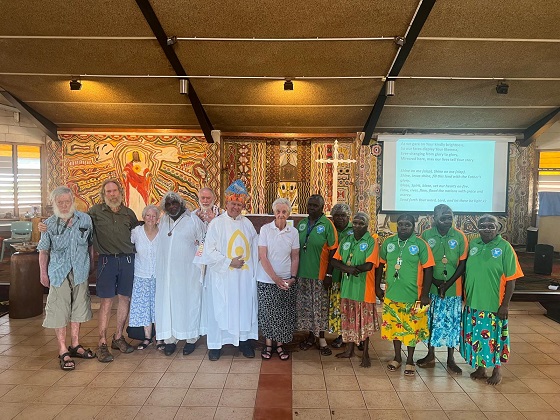
Today, we bid a heartfelt farewell to Sr Tess Ward, a woman whose life has been a profound testament to love, education, and cultural respect. Sr Tess has dedicated over four decades to the community of Wadeye, working tirelessly to preserve the Murrinhpatha language and bridge the gap between Indigenous culture and modern education. Her groundbreaking efforts in establishing a bilingual education program have touched countless lives and will continue to inspire generations to come.
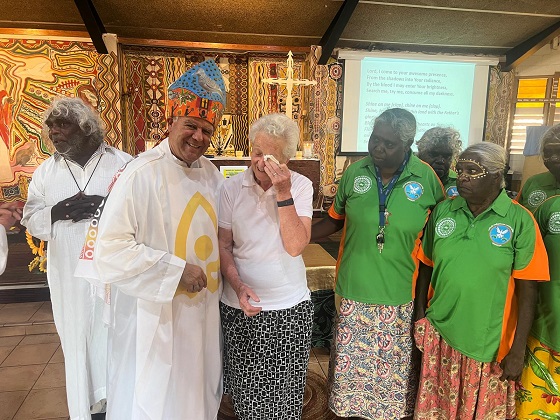
Thank you, Sr Tess, for your unwavering commitment to serving others and for being a shining light in our Diocese. Your legacy will forever be felt in the hearts of those you've impacted. We pray that God’s blessings accompany you in this next chapter of your journey.
+Charles
OLSH Parish Wadeye
And Tess with PP, Leo Wearden MSC
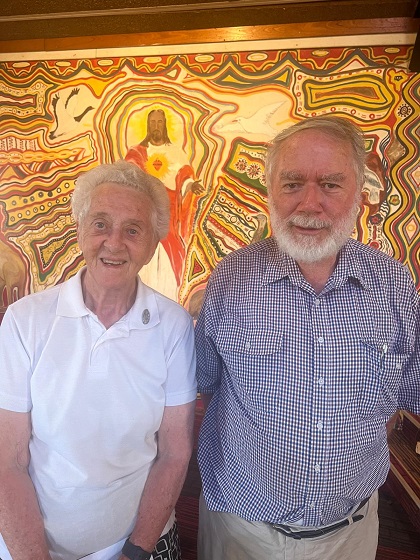
He Loved Us, Pope Francis’ Encyclical on Heart Spirituality
He Loved Us, Pope Francis’ Encyclical on Heart Spirituality
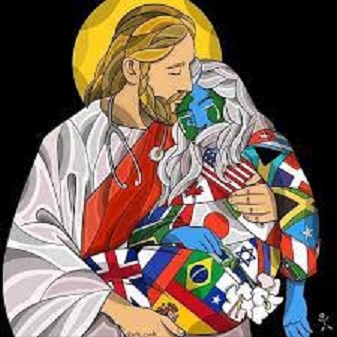
The Coronavirus Jesus
Pope Francis released a new encyclical Dilexit Nos (“He Loved Us”) on Thursday, calling for a renewed understanding of devotion to the Sacred Heart in the modern era and its many pressing challenges.
It is almost 70 years since Pius XII’s Encyclical Haurietis Aquas (“You will draw water…”), 1956.
ON THE HUMAN AND DIVINE LOVE OF THE HEART OF JESUS CHRIST

Some selected passages of Heart Spirituality
- “HE LOVED US”, Saint Paul says of Christ (cf. Rom 8:37), in order to make us realize that nothing can ever “separate us” from that love (Rom 8:39). Paul could say this with certainty because Jesus himself had told his disciples, “I have loved you” (Jn 15:9, 12). Even now, the Lord says to us, “I have called you friends” (Jn 15:15). His open heart has gone before us and waits for us, unconditionally, asking only to offer us his love and friendship. For “he loved us first” (cf. 1 Jn 4:10). Because of Jesus, “we have come to know and believe in the love that God has for us” (1 Jn 4:16).
5. The heart is also the locus of sincerity, where deceit and disguise have no place. It usually indicates our true intentions, what we really think, believe and desire, the “secrets” that we tell no one: in a word, the naked truth about ourselves. It is the part of us that is neither appearance or illusion, but is instead authentic, real, entirely “who we are”.
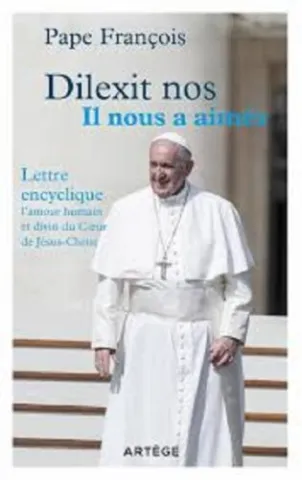
12…. For only the heart creates intimacy, true closeness between two persons. Only the heart is able to welcome and offer hospitality. Intimacy is the proper activity and the domain of the heart. Stavrogin is always infinitely distant, even from himself, because a man can enter into himself only with the heart, not with the mind. It is not in a man’s power to enter into his own interiority with the mind. Hence, if the heart is not alive, man remains a stranger to himself”.
33. Christ showed the depth of his love for us not by lengthy explanations but by concrete actions. By examining his interactions with others, we can come to realize how he treats each one of us...

39… If Jesus calls you and summons you for a mission, he first looks at you, plumbs the depths of your heart and, knowing everything about you, fixes his gaze upon you.
44. Jesus’ words show that his holiness did not exclude deep emotions. On various occasions, he demonstrated a love that was both passionate and compassionate. He could be deeply moved and grieved, even to the point of shedding tears. It is clear that Jesus was not indifferent to the daily cares and concerns of people, such as their weariness or hunger
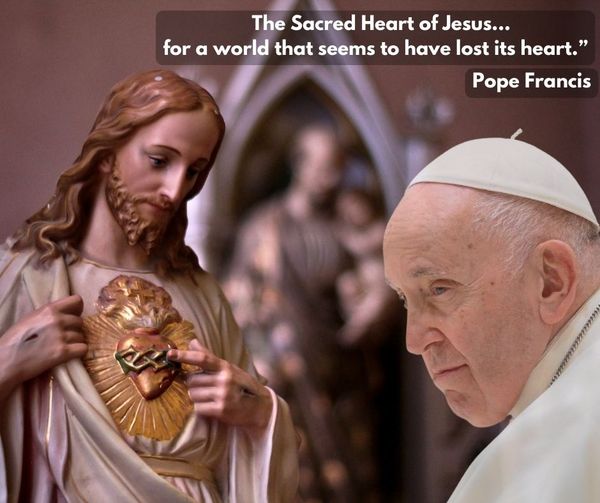
Charis International
53. Universal human experience has made the image of the heart something unique. Indeed, throughout history and in different parts of the world, it has become a symbol of personal intimacy, affection, emotional attachment and capacity for love. Transcending all scientific explanations, a hand placed on the heart of a friend expresses special affection: when two persons fall in love and draw close to one another, their hearts beat faster; when we are abandoned or deceived by someone we love, our hearts sink. So too, when we want to say something deeply personal, we often say that we are speaking “from the heart”. The language of poetry reflects the power of these experiences. In the course of history, the heart has taken on unique symbolic value that is more than merely conventional.

Our Novices making their 30 Day Retreat
Our Novices making their 30 Day Retreat

Our novices, Long and Nang, are at St Mary's Towers this month for their 30 Day Retreat.
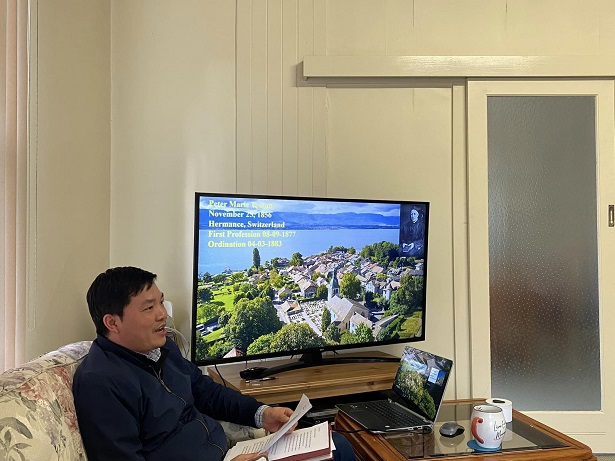
An invitation to support them in prayer during it final week.
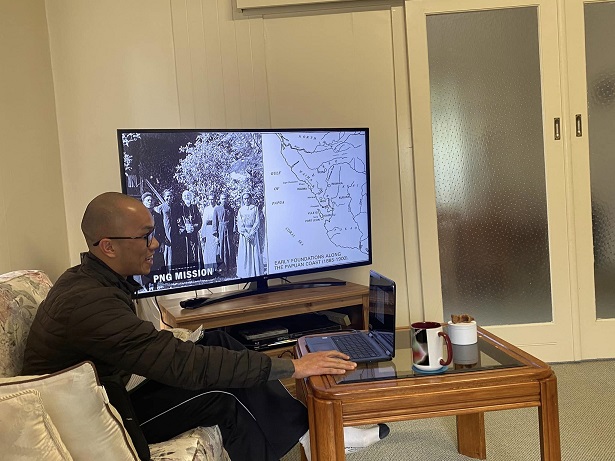
Thanks to the MSV Vocations Australia Facebook for the photos.
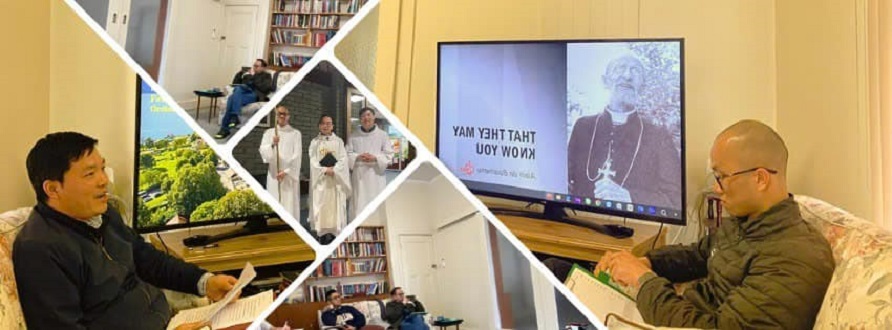
Around the MSC world
Around the MSC world
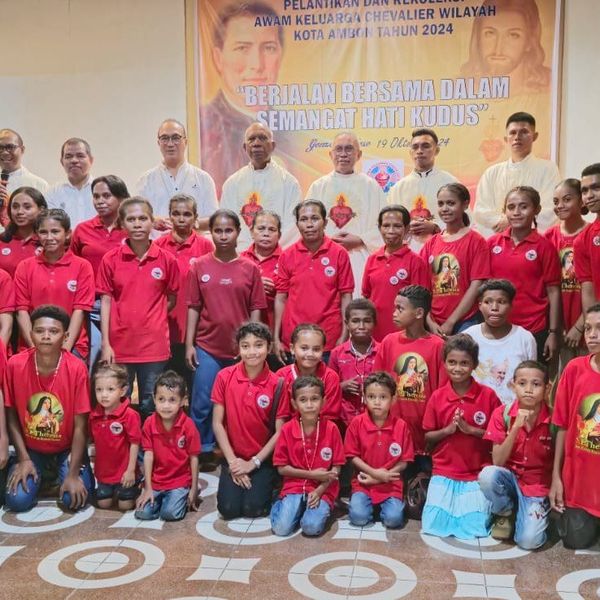
Indonesia, see below
The French Union novitiate.
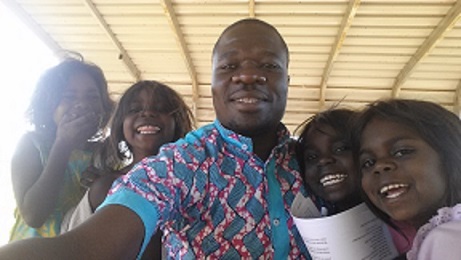
From Jonas Hassan Mouchi MSC (who studied in Sydney 7 years ago). He writes:
You might have heard that our union noviciate has been transferred on the other side of Congo river in Congo Brazzaville country.
We started the noviciate new year on the 07th of September. They are 10 novices from three countries with 3 formators.
Everything is fine so far. Greetings to all
And also from Africa, the mission and communities in Mozambique.

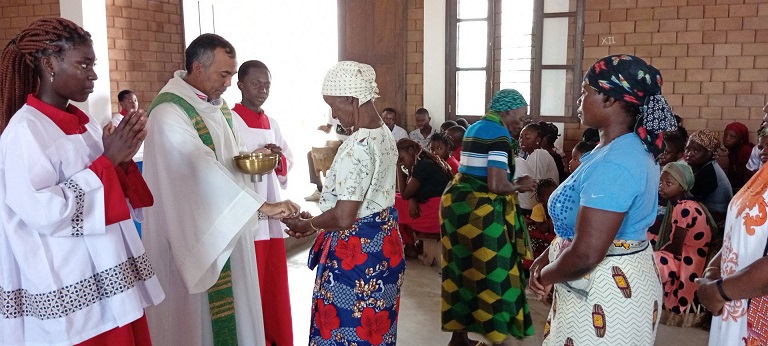
Indonesia – Laity of the Chevalier Family

These photos are from the new local council in Ambon (Mollucas) and Makassar (South Sulawesi) and also in Merauke (Papua)
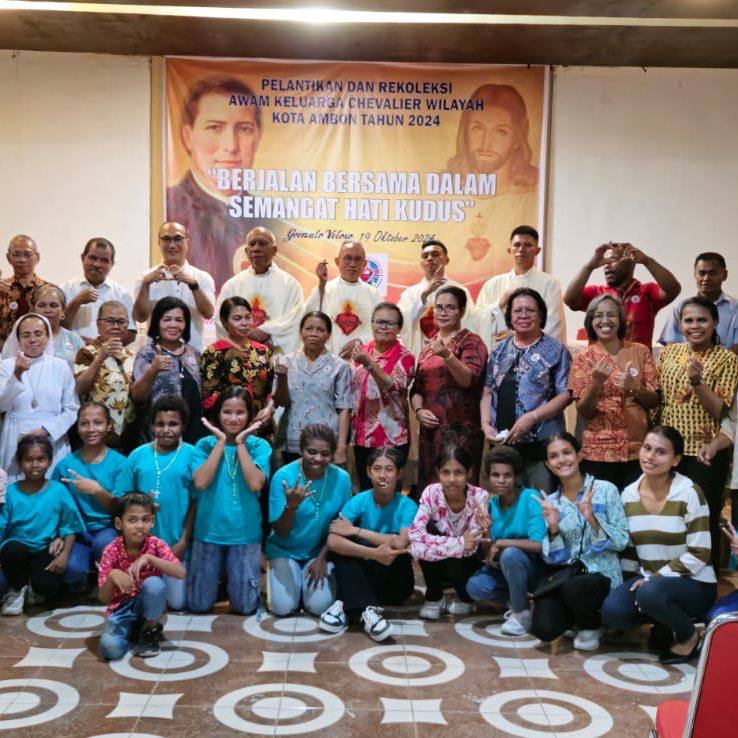
where they were incorporated into the membership of the Chevalier Family in their region.
And in the new Indian Province
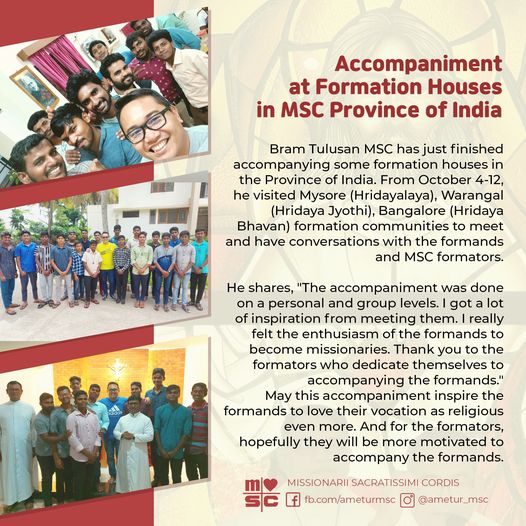
Wireless Priest: Archibald Shaw and the Maritime Wireless Telegraph Company
Wireless Priest: Archibald Shaw and the Maritime Wireless Telegraph Company
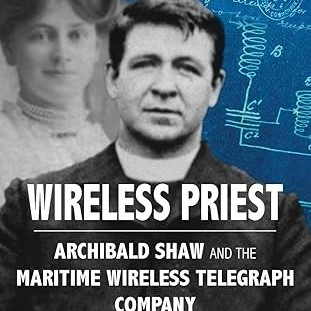
A strange episode in the early history of the province, Archibald Shaw, the first ordained priest of the province. For further information, Google the entry on Fr Shaw by J.F. McMahon for the Australian Dictionary of Biography and his chapter in Jim Littleton’s 2017 book, MISSIONARY DISCIPLES, SOME REMARKABLE MSC
Here is a new book on Fr Shaw.
Wireless Priest: Archibald Shaw and the Maritime Wireless Telegraph Company Paperback – July 11, 2024 by Matthew Ryan, published by Studio20.
Around 1910 a forward-thinking Catholic priest, Archibald Shaw, was experimenting with spark-gap wireless about a decade before broadcast radio took-off. He founded an engineering factory in the Sydney suburb of Randwick. Shaw was a missionary priest and his intention was to use the wireless sets he manufactured to keep in touch with distant missionaries throughout New Guinea and the Pacific Islands. He hoped that profits from his factory might bring his order's missionary accounts out of debt as well. Within a short time his business won a large tender to construct Australia's first Coastal Wireless Service established by the government in the aftermath of the Titanic disaster of 1912.
In the middle of 1916 became unconscious in the company of a man and two prostitutes in his room at the Melbourne Coffee Palace. A large sum of cash he withdrew from the bank two days prior could not be accounted for.
Shaw just completed the sale of Australia's first wireless manufacturing business to the Royal Australian Navy. He was about to return to Sydney and move to America with a girl to whom he was secretly engaged.
Five days later he is dead.
An ensuing Royal Commission into the purchase of his business reveals government corruption and results in the sacking of a Minister of the Crown and the resignation of a Tasmanian senator.

The mystery surrounding Shaw's death is never resolved. A police report has disappeared and the missing money is never traced.
An astonishing tale, meticulously researched: this is the extraordinary story of Archibald Shaw - orphan, missionary priest, wireless engineer, businessman and man of many secrets.
Matthew Ryan completed post-graduate studies in physics and theology and has a graduate certificate in documentary filmmaking. He is a Churchill Fellow and was the inaugural Science Teacher Fellow at the University of Sydney in the School of Physics. He is a licensed radio amateur and has conducted several contacts between students and astronauts aboard the International Space Station. He has built equipment powerful enough to bounce radio signals off the moon.
Ghostlight
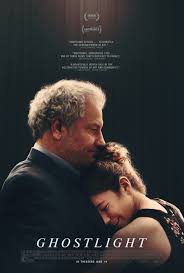
GHOSTLIGHT
US, 2024, 115 minutes, Colour.
Keith Kupferer, Katherine Mallen Kupferrer, Tara Mallen, Dolly De Leon, Hanna Dworkin.
Directed by Kelly O'Sullivan, Alex Thompson.
A caution that this is a very serious film, serious themes requiring audience attention. It is a film about families and therapy, theatre as therapy, performance as therapy, and the film itself performing some kind of therapeutic function for the audience, some understanding, some empathy, some hope.
To the theme from Oklahoma, Oh What a beautiful morning, we are introduced to construction worker, Dan, older, serious, called to the principal’s office with his wife to discuss the expulsion of his daughter, Katherine, for attacking a teacher. Katherine is angry, compulsive behaviour. Dan and his wife, Sharon, hopeless as to what to do. And then we see Dan at work, preoccupied, assaulting an aggressive driver. What is behind this family anger?
In fact, this is only gradually revealed, indications of a lawsuit and meetings with an adviser for a deposition. Sharon conducts children singing a song at a school event. Katherine is involved in therapy.
Angry with Dan because of roadworks and noise, Rita, an actress from the Philippines (Dolly de Leon so effective in Ruben Ostlund’s Triangle of Sadness) sees him lose his temper and invites him to come in to meet the group in an old abandoned cinema.
And here begins the theatre connection, the theatre therapy. Rita invites Dan in to join the group, a motley collection, an unlikely community theatre group as you will ever find! Dan is welcomed by the sympathetic and knowledgeable director. Dan is at a loss, but returns, gradually coming more and more involved, the play being Romeo and Juliet. Katherine is able to show him the video of as Lerman’s Romeo + Juliet, to explain iambic pentameter to him. He becomes more and more involved.
The audience is invited to become more and more involved in this strange group, their ups and downs, the rehearsals, the tantrums, the enthusiasms, and Dan secretly returning to rehearsals, seen by his wife and daughter with Rita, Katherine following him – but quickly caught up in the enthusiasm of the group. Katherine herself aspires to be an actress, enjoys singing, becoming part of the group.
But, the true story behind the family grief and anger is gradually revealed, and the screenplay opens up parallels with Romeo and Juliet, to the point where it seems a good idea, even though they are old, that Dan and Rita play the starcrossed lovers, the experience, especially in the night of actual performance, bring home the reality of his grief which parallels that of the play. Cathartic for Dan as well as for Sharon and Katherine.
Audiences will be caught up in the drama – and, able to suspend disbelief that such a group could achieve such a performance, could actually stage it with costumes and stagecraft so quickly.
In fact, the actors performing the family in this film are husband and wife and daughter, strong performances, most especially moving is Keith Kupferer completely convincing as Dan,. A moving experience.
- An unexpected experience, portrait of the family, tragedy and sadness, the telling of stories, the sharing the stories, drama and theatre?
- The setting, an American town, family home, school, workplaces, the streets, the abandoned cinema, the interiors and its use as theatre space, the school theatre space, visits to therapists…? The musical score? Songs from Oklahoma?
- The title, not appearing until the end, the experience of presence of the dead, the theatrical experience in dramatising tragedy ghostlights and footlights?
- The significance of theatre, auditions and actors delving into themselves, motivations, consciousness, issues? Rehearsals and their effect? Interactions, clashes, emotional testing, intimacy, angers? The achievement of performance, audience response, cast satisfaction – catharsis?
- The introduction to Dan, his age, work helmet, situations, collaboration with his workmate, call to the school principal, meeting his wife, Katherine and her behaviour at school, her outbursts with the principal, issue of expulsion, arguments, suspension? Audiences puzzling as to the key problem at home?
- Dan, returning to work, the noise with the digging of the streets, Rita and her coming out, her anger with the workers? Danny and his reaction, thinking about his daughter? The driver, the confrontation, the physical violence? His leaving, the later meetings with the boss, the confrontations?
- At home, his wife, love for her husband, exasperation with him, the problems of Katherine? The issue of therapy, their going, his wife’s reaction, Katherine and her scepticism, and not wanting to go? Been forced into situations, his angry reactions?
- Back to work, the discussion with the authorities, the encounter with Rita, her inviting him in, his following her, community theatre, the unusual character is there, the skill of the director and her control, her insights, encouragement? The older men, not looking like actors, the younger men, the older lady? Dan, reading, the awkwardness, the encouragement of the others, his return? His wife and Katherine seeing him, suspicions of an affair?
- The character of Rita, theatre, Filipino background, with the group, friendship with Dan, interactions, friendly with the family, wanting to perform Juliet, her achievement?
- The choice of Romeo and Juliet, the various aspects of the text, the introduction, the rehearsal of the love meeting seeing, the death of Juliet, the death of Romeo? The iambic pentameter, the video of Baz Luhrman’s film, the explanation of the rhythms of Shakespeare’s language? The effect on Dan?
- Katherine following, suspicious, finding the theatre, the confrontation, discovering the truth, quickly adapting, enjoying the company, becoming part of the ensemble, the rehearsals, the songs from Oklahoma? Her participation in the rehearsals?
- The gradual revelation of the death of their son, his relationship, the prospect of moving, the love, the suicide, the girl surviving? Going to the lawyer, rehearsing the questions and answers? The document? The final meeting, its effect, the young girl and her meeting with Dan, apologies? The meeting, unsettled?
- Danny and his wife, the gradual revelation of the truth, her coming to meet the group, her enthusiasm, her previously being seen conducting the children singing, the theatre space, the ensemble coming, rehearsals, sets, lights, unexpectedly lavish and such preparations in such a short time?
- Rehearsals, difficulties, changing characters, the actor going off in a huff? Dan, the emotional crisis, whether to go in or not, the rehearsals of the death of Romeo, the surfacing of his feelings about his son’s death, identifying with him?
- The performance, the crowd, the students getting credit for attending the play, his friend from work and his wife, Dan’s wife and the cheer squad? The performance, the success, the importance of Dan experiencing the surfacing of his feelings? The aftermath and happiness?
- Tragedies, trauma, therapies, communal therapy, surfacing issues, overcoming reserve and fears? Ultimate effect?
